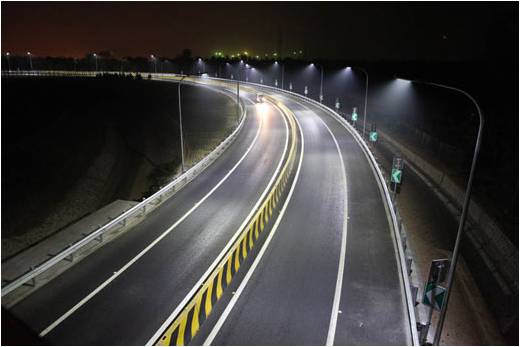China’s decade old streetlight standard GB7000.5-2005 has been replaced with a new standard GB7000.203-2013 that has become effective as of July 1, 2015. Changes in the new and old lighting standards will require manufacturers to make certain adjustments in their outdoor luminaire designs, according to a Shanghai Entry-Exit Inspection and Quarantine Bureau’s Electromechanical Engineering Department statement.
Three major technology differences in the new “Luminaires. Part 2-3: Particular Requirements. Luminaires for Road and Street Lighting” are:
1) Added maximum installation height label
Manufacturers should state the maximum streetlight installation height in the user manual. When the labelled height exceeds 5 meters, luminaires with glass casings must meet safety regulations listed in article 6.5 of GB7000.203-2013.
2) Amendments in glass cover safety test requirements
The old streetlight standard only regulated glass pane tests, but the new standard now includes finished glass products. Under the new regulations streetlights curved glass lamp casings must also meet glass casing safety standards.
A new glass cover testing evaluation method has been added to GB7000.203-2013, which requires the glass to meet two conditions. The first condition is the glass must be shatter proof after being subjected to pendulum impact testing of up to 5 Joules. The second requirement is if a square glass with an area of 50mm x 50 mm shatters upon impact, the number of cracked glass within the area must be greater than 20.
Readers should be aware that if a glass shatters into more than 40 pieces upon impact, it automatically meets certification requirements outlined in the latter condition. However, if the glass breaks into more than 20 pieces but under 40 pieces, it still has to meet the regulation that the glass must be shatter proof upon 5 joule impact.
3) Glass casings should be used under temperature limit
Glass casings should be used under the manufacturers stated temperature limit, which includes the minimum and maximum temperature limit, as well as the greatest Δt value.
Things manufacturers should pay attention to once the new standard is rolled out
Once the new standard rolls out, manufacturers should value glass casings safety features. When using the glass, manufacturers should ensure temperature changes in the glass are within the safety thermal limit. At the same time, the finished glass should use glass with high safety standards, such as curved tempered glass so it will break into smaller pieces and reduce potential harm.
Once the new standard is implemented, China’s Quality Certification Center will be issuing a notice about the updated standards. Manufacturers should pay attention to the center’s website for latest certification developments, and update their certification to the latest standards to prevent their products certification from becoming invalid.
From LEDinside





